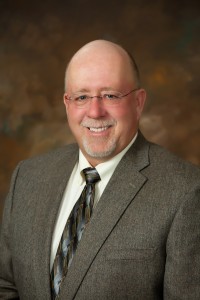Before last weekend’s water summit hosted by Gov. Mark Dayton, two Minnesota Corn Growers Association (MCGA) farmer-leaders submitted guest columns to both the Star Tribune and Pioneer Press. We thought it was important that farmers were part of the discussion in the days leading up to the summit.
Unfortunately, the Star Tribune and Pioneer Press did not agree as both guest columns went unpublished. Perhaps the two newspapers were confused by columns that contained actual ideas for solutions and agricultural insights instead of the usual finger-pointing and political blame-game rhetoric.
We thought both guest columns deserved to see the light of day, even if our state’s two largest newspapers did not agree. So, we’re going to publish them here on Minnesota Cornerstone.
The first column was written by St. James farmer and MCGA first vice president Harold Wolle. The second column was penned by Plato farmer Brian Thalmann, who also chairs MCGA’s production stewardship action team.
Wolle’s column is below. Check back later today to read Thalmann’s column. Thank you to both Harold and Brian for taking the time to try and share with the non-farming public what’s happening in the area of water quality from a farmer’s perspective.

Harold Wolle
On Saturday, Gov. Mark Dayton will convene a statewide water summit in St. Paul. I’ll personally be attending the summit, and I know agriculture will be a major topic.
I’m a fifth-generation family farmer who takes protecting our state’s waterways seriously. On my own farm, I have grass-backed terraces, Conservation Reserve Program acres and restored wetlands to help protect nearby water quality.
The agricultural community is constantly striving to strike the right balance among growing food for the entire world, protecting the environment and running a profitable farming operation. We’re not perfect, but we’re striving to improve all the time.
I don’t claim to know it all when it comes to agriculture and water quality, but I know my fellow farmers and I value clean water as much as every other Minnesotan. I’ve compiled a list of four points from the farmer’s perspective that I hope are covered at the governor’s summit. The agricultural community dedicates research efforts and funding resources to these four items so we can farm better, farm smarter and continuously improve in the area of protecting water quality.
I believe it’s time to move beyond the political bickering involved with the buffer legislation. By incorporating these four items into the broader conversation on farming and water quality, we can do that.
- Conservation efforts need to be targeted. Unfortunately, there is no one-size-fits-all solution to improving water quality. Minnesota’s farmlands are vast and diverse. The conservation practices we implement need to reflect that. In some areas, buffers make sense. In others, conservation tillage or cover crops may be more effective. Precision conservation efforts make much more of an impact than a scattershot approach. Farmers have many tools in their conservation toolbox. We need to make sure the tools being used are making maximum impact.
- Direct resources to on-the-ground practices. In 2008 Minnesotans voted to tax themselves through the Legacy Amendment, in part to help protect and restore water quality. We need to ask ourselves: Are we dedicating enough resources, including Legacy Amendment funds, to supporting the implementation of additional targeted, on-the-ground conservation efforts? We’ve conducted plenty of studies and convened more than enough meetings. It’s time to dedicate scarce resources where they’ll have the greatest return on investment.
- Seek solutions, improve cooperation. We’ve all been to conferences that cover contentious issues where everybody just complains or sticks to their rigid set of talking points. Nothing gets accomplished. The path toward finding real-world solutions narrows. I hope that doesn’t happen at the governor’s summit. Agricultural organizations dedicate millions of dollars annually to address water quality issues. So do government agencies and the private sector. Instead of bickering with each other or using political rhetoric to score points with various constituencies, let’s examine how we can work better together and address the actual problem: water quality.
- Acknowledge progress. All of us – farmers, non-farmers, cities, and homeowners – need to do a better job protecting water quality. That’s the unfortunate reality we’re all facing. However, it’s not all doom and gloom. A recent report from the Minnesota Pollution Control Agency showed reductions in five of seven major pollutants in Minnesota waterways over the last 30 years. As a farmer, I take great pride that sediment and phosphorus were two of the areas that saw a reduction. The agricultural community has worked hard to keep sediment and phosphorus on their fields and out of waterways over time. Those efforts are paying off. The MPCA study also showed that we have some work to do on nitrogen. Mission accepted. By acknowledging existing progress, it helps boost momentum toward improvement in other areas.
**Harold Wolle farms near St. James and is first vice president of the Minnesota Corn Growers Association.**

